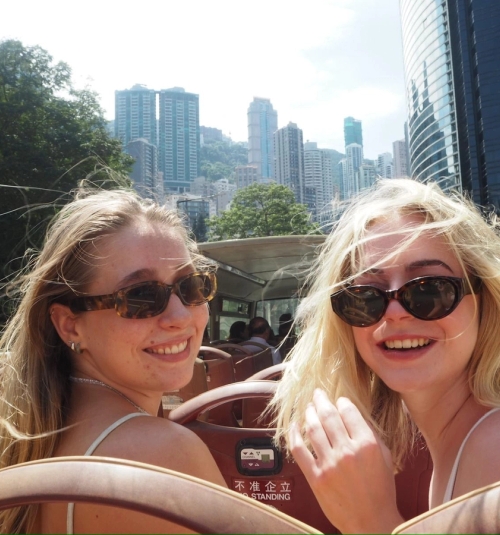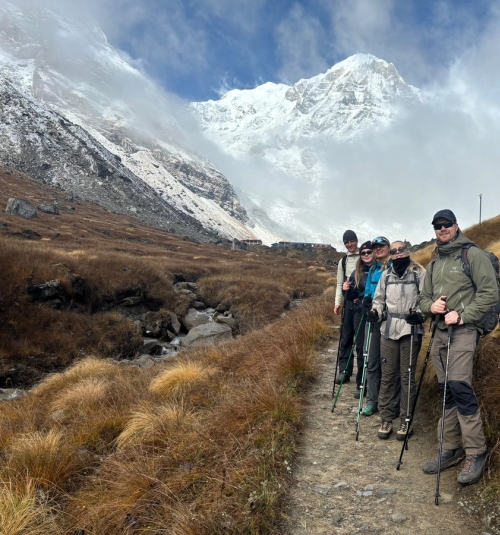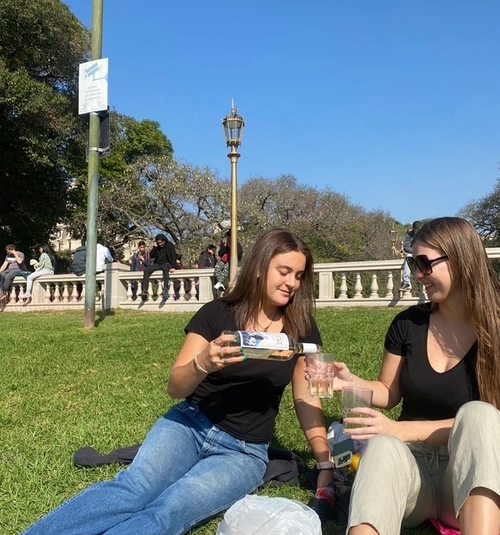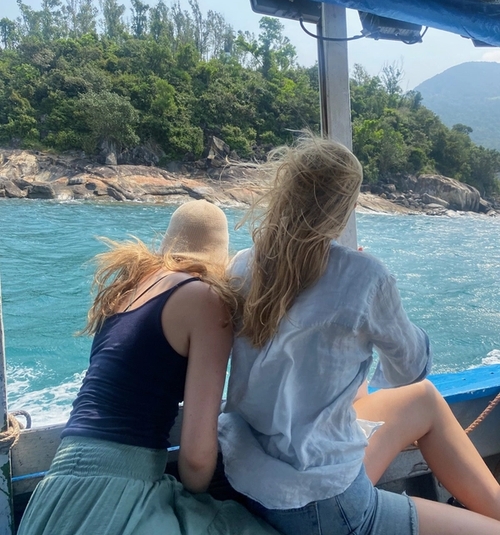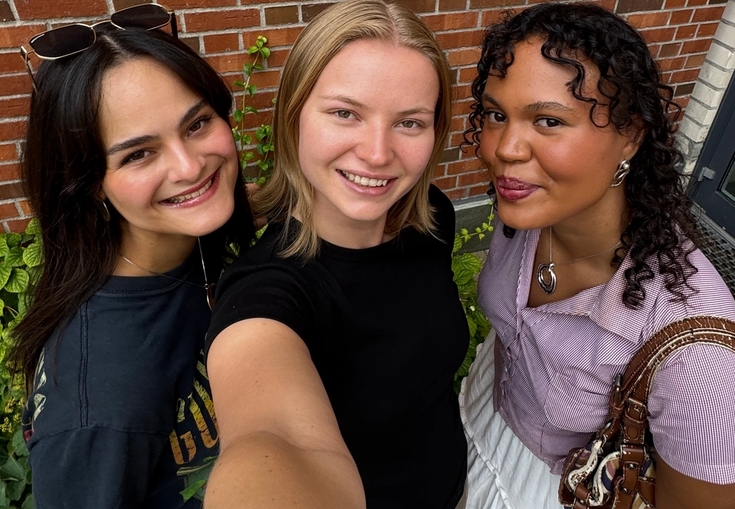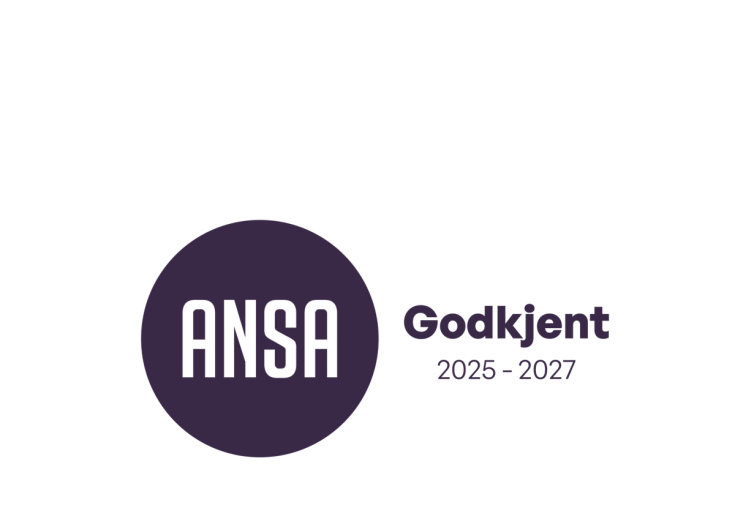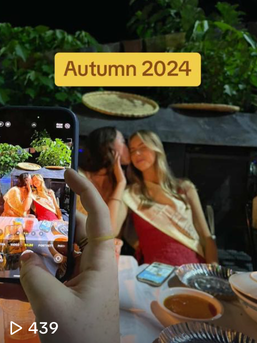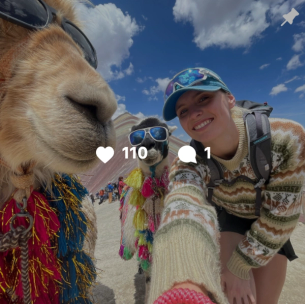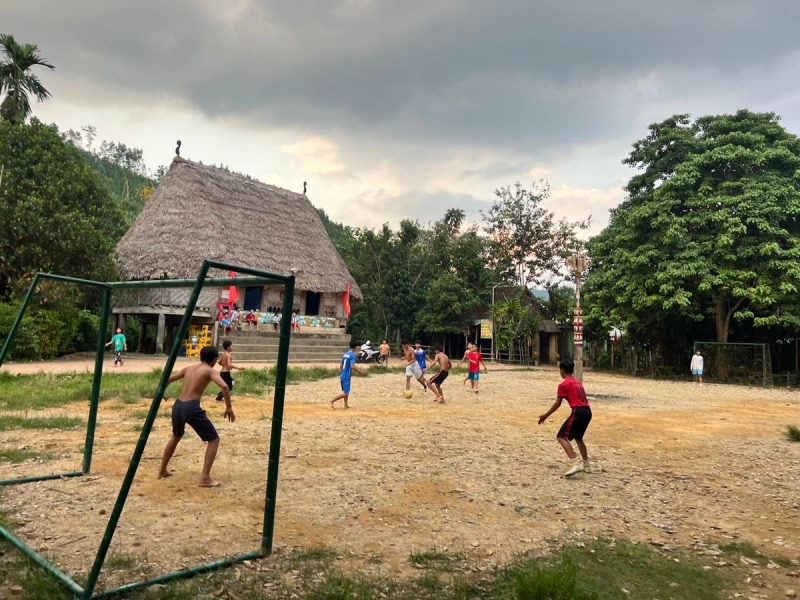
En minneverdig ekskursjon til Ka Tu-landsbyene
Vietnam gir en interessant kontekst når det gjelder utviklingsspørsmål. For å bedre lære og dra nytte av dette, vil det bli organisert en feltutflukt i løpet av semesteret.

Denne teksten er oversatt ved hjelp av kunstig intelligens.
Se den originale versjonen av artikkelen her.Ved slutten av vår fjerde uke her i Vietnam dro vi enten til Bho Hoong eller Dhroong landsbyen, hvor vi fikk møte Katu-folket, en etnisk minoritet i Vietnam. Feltturen var virkelig en unik opplevelse som jeg vil verne om for livet.
Reisen begynte fra Hoi An, hvor vi dro av gårde med busser tidlig om morgenen. Etter omtrent en time med kjøring på svingete fjellveier, stoppet vi i en liten landsby for en velfortjent kaffepause.
Sammen med kaffen fikk vi smake på noen lokale frukter, som mangostan og rambutan. Ved middagstid ankom gruppen min til Bho Hoong-landsbyen, klar for å engasjere seg med det lokale samfunnet.
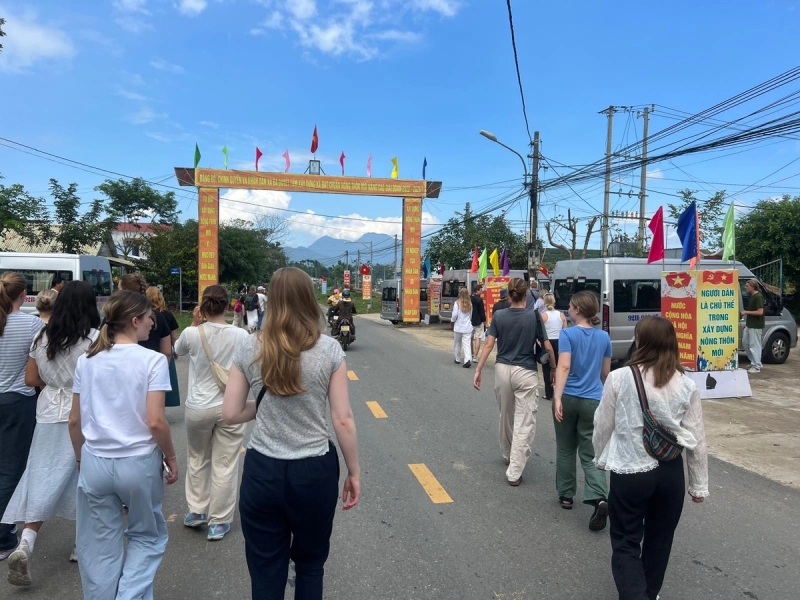
Før ekskursjonen ble vi delt inn i forskningsgrupper, hver med et emne å utforske. Min gruppe fokuserte på arbeid og levebrød i samfunnet. Med hjelp fra vår oversetter fra VNUK-universitetet i Da Nang, intervjuet vi lokalbefolkningen og fikk verdifulle innsikter i deres daglige liv. Vi gjennomførte intervjuer med lokale bønder, bedriftseiere og en eldre leder i landsbyen. Det var en autentisk lærerik opplevelse!

Ingen reise er komplett uten å oppleve lokalmat, og vi ble servert deilige måltider tilberedt av landsbyboerne. Ris, mais og svinekjøttet vi nøt var grunnleggende i kostholdet deres, noe som viste frem hva lokalbefolkningen produserer og spiser daglig. Vi fikk også servert tofu, omeletter og søtpoteter.
Alle spiste sammen, og vi satt på gulvet. Å dele måltider på denne måten fremmet en følelse av fellesskap og takknemlighet for kulturen deres. Etter middagen dro vi til en varm kilde i nærheten, hvor vi fikk se solnedgangen over fjellene. Noen av studentene tok også en svømmetur!
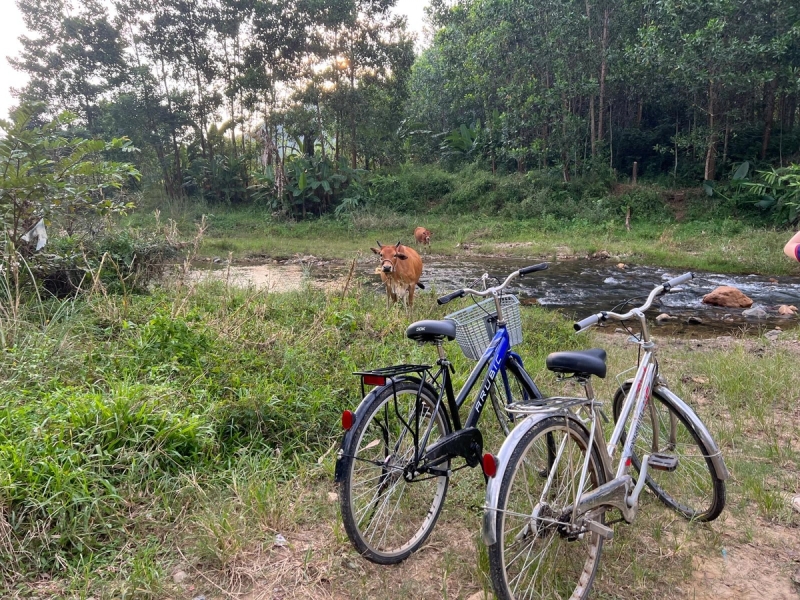
For overnattingen vår bodde vi i samfunnshuset, sentralt i landsbyen. Vi sov på gulvet og fikk utdelt puter, tepper og myggnett. Vi måtte ordne dette selv, noe som kunne være litt frustrerende, men det ga oss en god latter etterpå. Vi hadde også med oss kort og litt snacks. Denne innstillingen ga også en utmerket mulighet til å knytte bånd med andre klassekamerater.
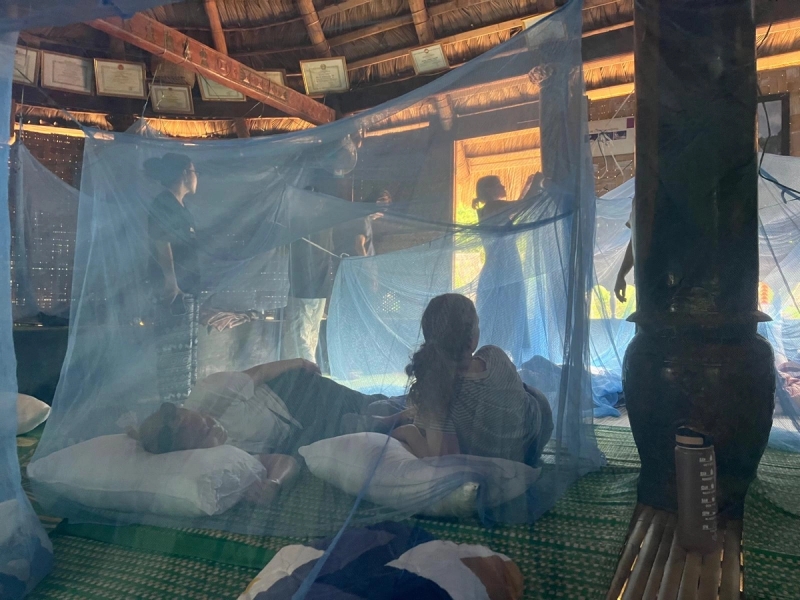
Høydepunktet på kvelden vår var en kulturell dans fremført av det lokale samfunnet. Den var livlig og full av energi, og de inviterte oss til og med til å bli med.
Etterpå spilte vi både typiske norske og vietnamesiske spill med de lokale barna, noe som la til enda mer glede til kvelden, og brobygde mellom kulturene gjennom latter og musikk. Noen av oss hadde også tatt med gaver til lokalbefolkningen, hovedsakelig norske godterier til barna.
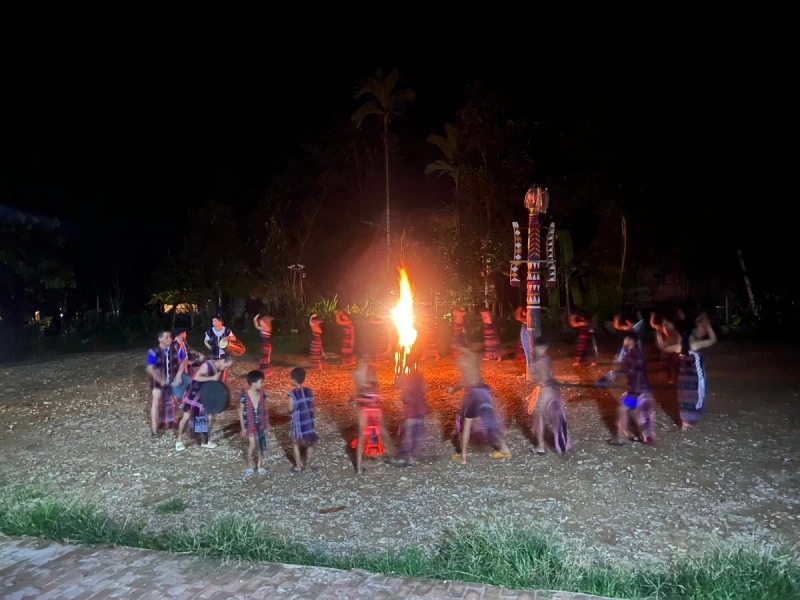
De små landsbyene ligger i de vietnamesiske høylandene, og komfortnivået er ikke det samme som du er vant til hjemmefra, heller ikke i Hoi An. Vær forberedt på en litt tøffere natt enn vanlig, selv om dette er en del av moroa!
Her er noen flere tips om hva du kan vurdere å ta med:
- Øyemaske & Ørepropper:Morgener kan være bråkete, så disse kan være nyttige.
- Komfortable klær og sko: Lett tøy for dagen og en jakke for kjøligere netter i høylandet. Behagelige sko er essensielt for å gå rundt i landsbyen.
- Gjenbrukbar vannflaske: Hold deg hydrert samtidig som du er miljøvennlig.
- Snacks: Granolabarer eller småsnacks er flotte for et energiløft.
- Insektsspray & Solkrem: Beskytt huden din, siden vi tilbringer mye tid utendørs.
- Kamera: Mange av oss hadde med digitale eller engangskameraer.
- Gave: Å gi gaver er en sterk del av kulturen i Vietnam. Små gaver som godteri, sjokolade, suvenirer osv., spesielt fra hjemlandet ditt, anbefales for å vise din takknemlighet ved forskjellige anledninger, som for eksempel når du utfører feltarbeid.

Etter at vi returnerte til Hoi An, presenterte vi våre funn for resten av klassen, og delte kunnskapen og historiene vi hadde samlet fra tiden vår med Katu-folket. Hvis du vurderer å studere i Vietnam, er dette bare en av de mange unike opplevelsene du kan se frem til. Det handler ikke bare om hva du lærer i klasserommet, men også de virkelige møtene som gjør programmet spesielt.
